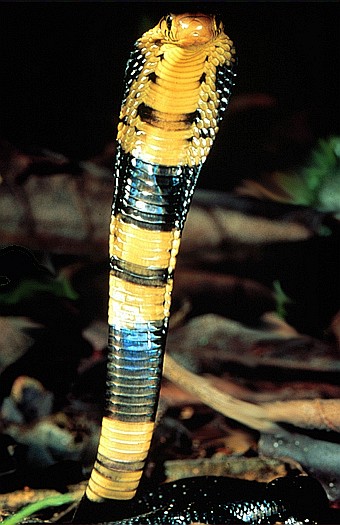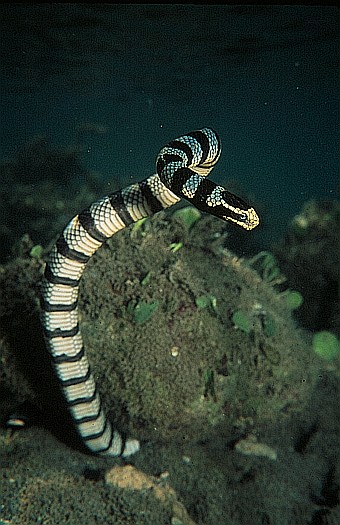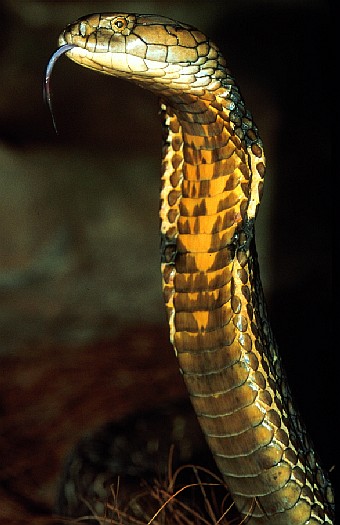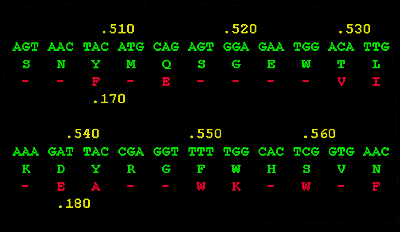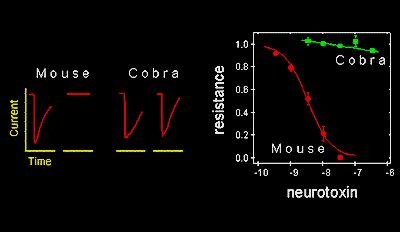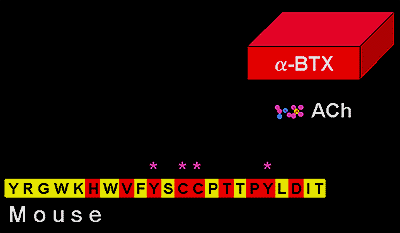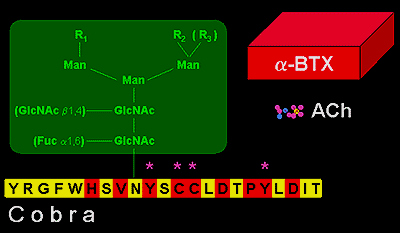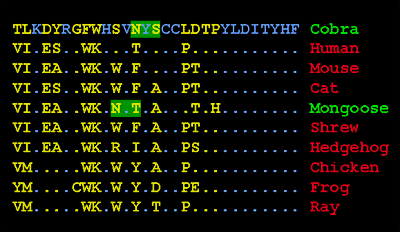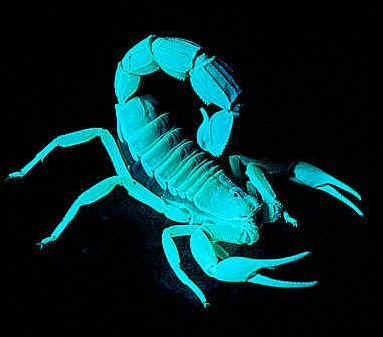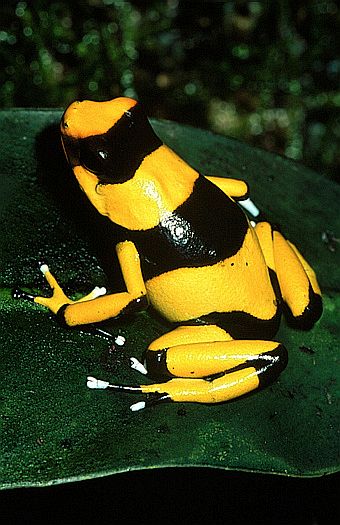Why the cobra is resistant to its own venom? |
| 1. Cobra venom is no
danger for cobra 2. Cobra DNA is different from mouse 3. Cobra DNA makes mouse resistant 4. Mouse is bare naked to the toxin 5. Cobra masks its receptor by a sugar 6. Cobra and mongoose does the same 7 .Scorpions, fish, newts, frogs... |
